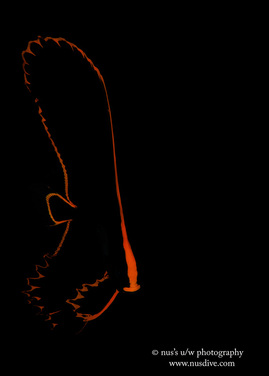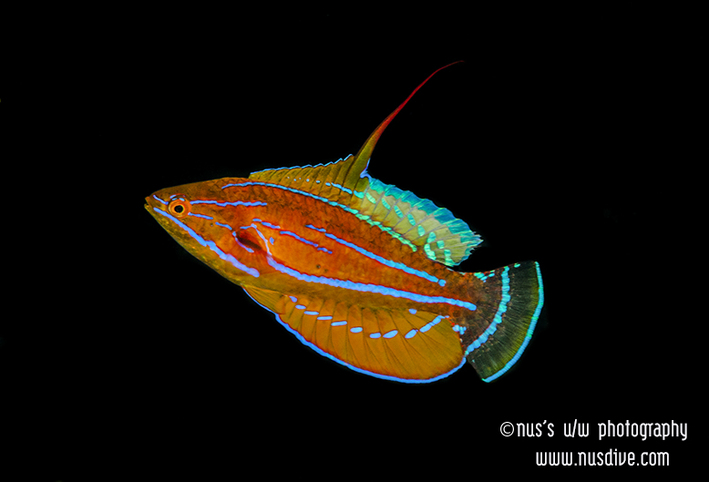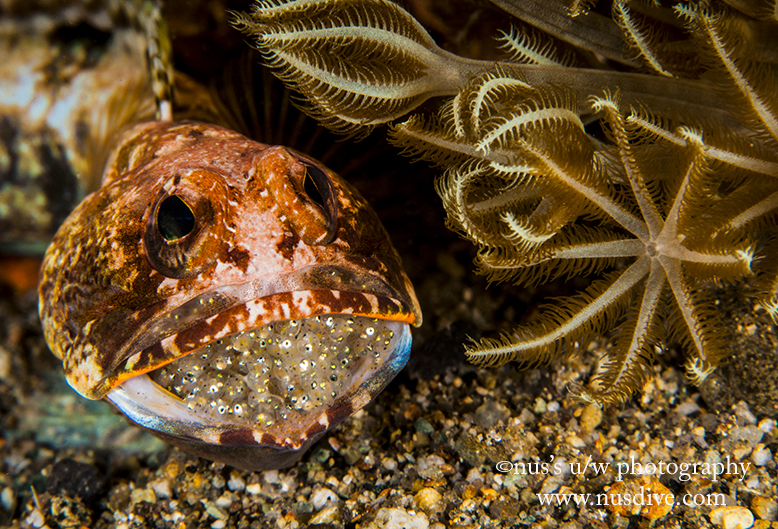 PINNATE BATFISH (Platax pinnatus)Young batfish are known to look like things in their environment to avoid being detected by predators. For example, juvenile orbiculate (Platax orbicularis) and tiera batfish (P. tiera) mimic leafs floating near the ocean's surface. Juveniles are often found drifting along with floating clumps of algae (e.g., Sargassum) and miscellaneous debris, sometimes a long way from coastal habitats (it may be an effective way for them to emigrate from one reef to another). But the young pinnate batfish (Platax pinnatus), which is usually found close to the reef, engages in a different kind of mimicry. It resembles a polyclad flatworm in shape, in color, and locomotion (they both move by undulated the edges of the "body"). Most predators avoid ingesting these flatworms because they taste bad, so it is advantageous for the young batfish to look like the worm (this is an example of Batesian mimicry). When it comes to their diet, relatively little is known about what pinnate batfish eat. In some areas, they feed heavily on algae and are even thought to help prevent large algae species (known as macroalgae) from overgrowing part of the reef and killing the coral. But they also known invertebrate-eaters, including sponges and tunicates, soft corals and hydroids on their menu. While juvenile pinnate batfish are solitary creatures, as they grow, they sometimes form small shoals that roam the reef and feed together. www.nusdive.com
3 Comments
 The species in the genus Paracheilinus are appropriately called flasher wrasses (or simply flashers), and they are very closely related to fairy wrasses of the genus Cirrhilabrus. Dr. John E. McCosker is the ichthyologist credited for originally naming Paracheilinus as the Flasher Wrasse, and this common name is derived from their grandeur "flashing" behavior observed during courting or mating where the male will make quick, exaggerated lateral moves while intensifying his colors and erecting his fins to attract a mate. www.nusdive.com Jawfish are named for their humorously large mouths, which serve several important functions. For catching food, of course — little bits of food and small swimming creatures that float by its burrow. And for digging burrows — taking big mouthfuls of sand and spitting them out as they create their hideaways. But jawfish are also mouthbrooders, meaning a parent fish will use their mouth to hold eggs until they hatch. Jawfish are also known to be monogamous, with pairs digging adjacent burrows and sometimes sharing or switching burrows . Males are the responsible brooder, and will hold a clutch of eggs in their mouth for 5 to 7 days — all the while looking like a chump with a mouth full of sticky marbles. During this period the male cannot feed, meaning mouthbrooding fish are underweight by the time the eggs hatch. Once the eggs have hatched, the fish will spend a period of time feeding and recuperating. www.nusdive.comhttp://wetpixel.com/forums/index.php?showtopic=8698
|
AuthorNus's Blog Archives
May 2015
Categories |
 RSS Feed
RSS Feed
